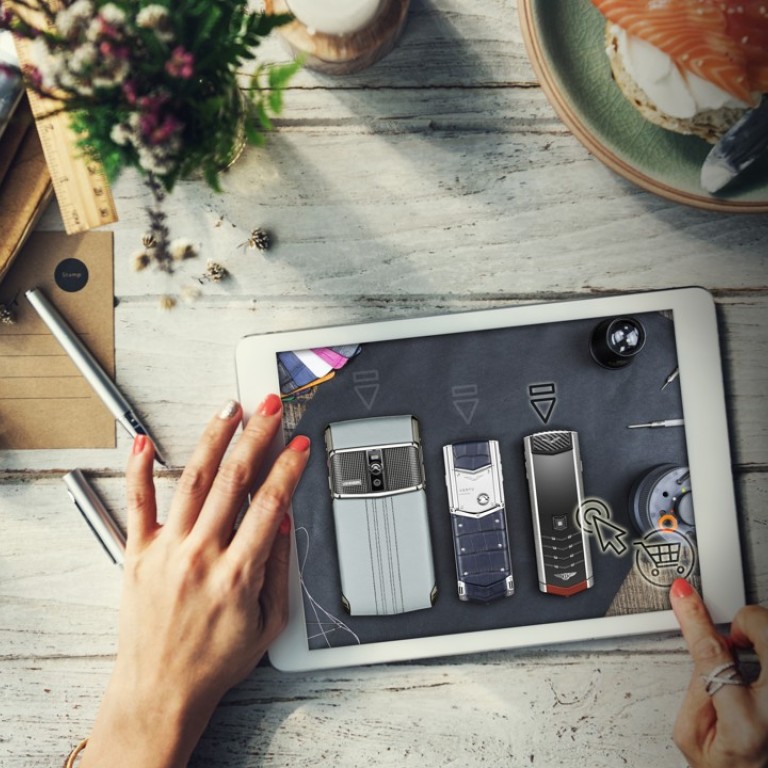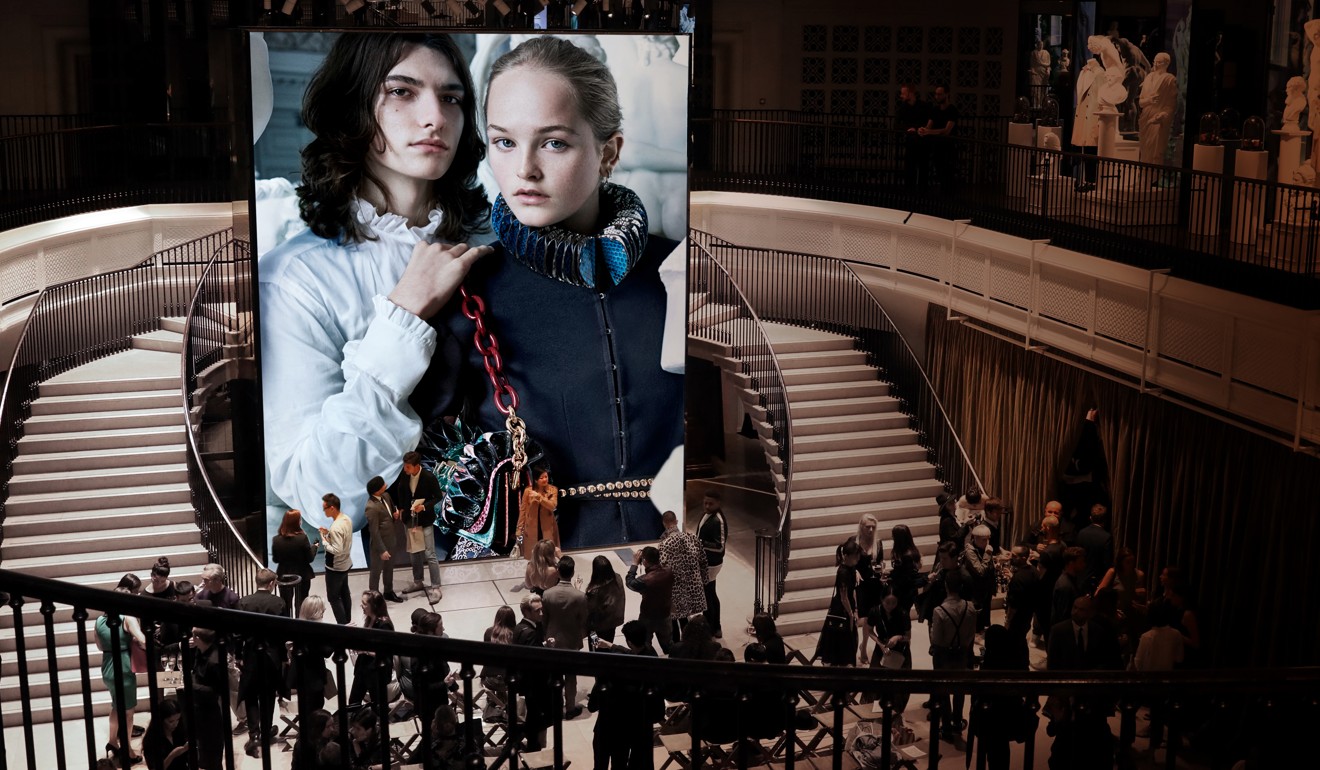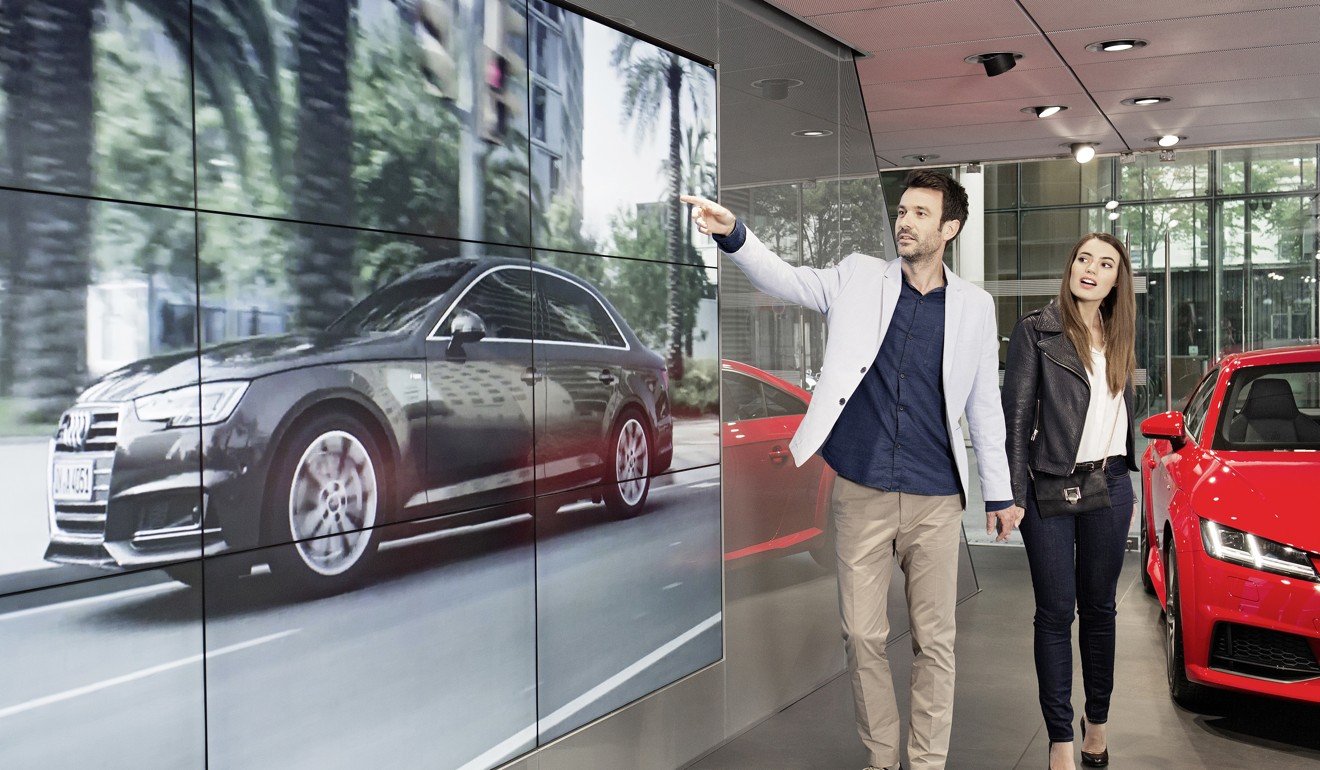
Brands embrace technology to keep brick-and-mortar outlets real for customers
High-end brands are integrating technology into their physical stores, allowing customers to see what they want to buy in every colour and configuration
When you step into Burberry’s flagship store on London’s Regent Street, you are immediately greeted by a floor-to-ceiling screen displaying runway footage. Broadcasting the latest looks from London Fashion Week, the screen provides a foretaste of the audio-visual experience you can expect to enjoy in the rest of the store.
Nearly 500 speakers pump out sound to accompany the images on the 100-odd screens within the store, instantly engaging with the customers.
The screens and mirrors also show bespoke multimedia content relating to certain garments and accessories that have radio-frequency identification technology woven into them. When a customer approaches a mirror to try on a product, the mirrors – as if by magic – become screens showing runway footage and other exclusive videos.

Technology is not just integrated with the immersive audio-visual experience. According to the brand, the flagship store experience is a marriage in which “online insights meet offline interactions to create the ultimate in luxury customer service”. Store associates are all equipped with an iPad that provides a detailed log of customers’ purchase histories and their preferences.
Burberry’s chief creative officer and CEO, Christopher Bailey, says:
“Our Regent Street flagship brings our physical and digital worlds together to create amazing experiences that encompass everything from fashion, to heritage, to music, to the Burberry foundation.”
Since it opened its flagship store in 2012, Burberry has become a trendsetter in the integration of technology with the physical retail space, creating a seamless experience for customers. Other brands are also tapping into this trend.
This may seem a strange direction to be moving in, given the ease with which shoppers can buy clothing online, these days. Aren’t brick-and-mortar stores supposed to be at risk of becoming obsolete? As one industry expert says: “Retailers have long resigned themselves to the ubiquity of online retail and how its growth displaces physical store visits.”

So why are brands still choosing to up the ante with their physical stores?
According to the Total Retail 2016 report, published by PwC, “the physical store is still operating from a position of strength, even as foot traffic slows”.
Data from the report shows that, while many consumers prefer to research product categories online, they often still desire some sort of physical interaction with a product before deciding whether or not to buy it. And the higher the price of a product, the more a consumer is likely to want to touch and feel it before deciding whether or not to make the purchase, the research adds.
While only 33 per cent of consumers prefer to research watches and jewellery in brick-and-mortar stores, 50 per cent make their final decision to purchase inside shops, the report says. Similarly, 52 per cent and 59 per cent of consumers prefer, respectively, to buy electronics goods/computers and household appliances in stores, compared to 29 per cent and 35 per cent, respectively, who conduct their research in stores.
It is important for brands to create a store environment that encourages shoppers to make their purchases once they are in the retail space, experts say. This involves creating a space that shoppers can enter with the expectation that their needs will be satisfied.
“For example, flagship experience stores, destination shopping centres, specialist stores, and pop-up stores make it very clear to the shopper what their respective purpose is, so customer expectations are more likely to be met,” the report says.
For many brands, what technology can help add to the retail experience is simple – personalisation, but with the added appeal of face-to-face interaction with knowledgeable staff.
British luxury mobile phone company Vertu has embraced this approach. At Vertu’s stores, such as the Wynn Macau store, technology is integrated into the retail experience to promote interaction.
The next step would be to have [digital integration] on a broader scale
This integration is fitting for a brand that is renowned for its curated services. With just the touch of a button on a Vertu phone, customers are a click away from either a dedicated lifestyle manager – a Vertu dedicated concierge – or a team of experts – Vertu classic concierges – who provide 24-hour worldwide personalised assistance, whether customers are looking for tickets to a musical, bookings for a helicopter ride or even golf lessons with Tiger Woods. The integration of technology in the retail space mirrors the personalised service received from the concierge team.

Nicholas Holt, Vertu’s general manager – APAC, demonstrates how a customer can design a personalised Vertu mobile phone at the brand’s flagship store in Hong Kong. On an iPad, Holt shows an array of materials, options, colours and stitching choices that allow customers to create their own personalised Vertu mobile phone in seconds.
By having the personalisation process in store, customers can also physically sample the leathers and metals they have selected for their personalised Vertu mobile phone, to see how all the products’ elements will look and feel together.
Referring to the store’s integrated functions on the iPad, Holt says: “The next step would be to have [digital integration] on a broader scale. For example, to have a screen on a table which [customers] can use [to the same effect]... It is an evolution.”
Other industries are also moving into the next stage of what Holt says is a technological evolution in the retail space.
Since 2012, automotive giant Audi has offered a “physical cyberstore” in the form of a showroom concept in select cities around the globe. The concept, Audi City, was launched to “bring together the benefits of the real and the digital worlds; to fully integrate them, and thus create a perfect brand experience for the customer in a seamless fusion of the two worlds”, the marque says.

Centre-stage in all Audi Cities is the digital and virtually true-to-life representation of Audi models against the floor-to-ceiling projection surfaces, which the brand dubs “powerwalls”. These powerwalls enable customers to view the collections and configurations in detail.
As at Vertu, Audi customers can use the Audi City technology to optimise and personalise a design with the help of a marque expert. There are also private lounges, each equipped with its own multitouch table and mega-screen, for more comfortable discussions. Audi customers can also view the actual fabric, leather and paint samples by scanning the QR code of their preferred material, which is then integrated into the digital configuration on the powerwall.
It seems the technology revolution isn’t just taking place online anymore. The integration of technology into the retail space adds a new element to shopping. As more brands continue to take an interest and blend the two worlds together, shoppers can expect exciting times ahead.
